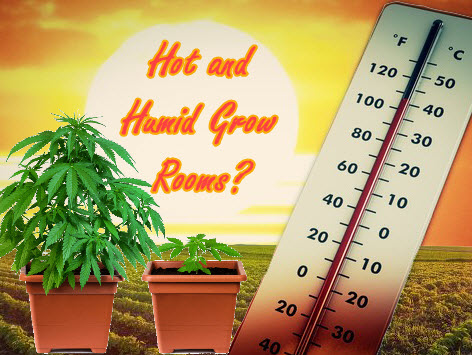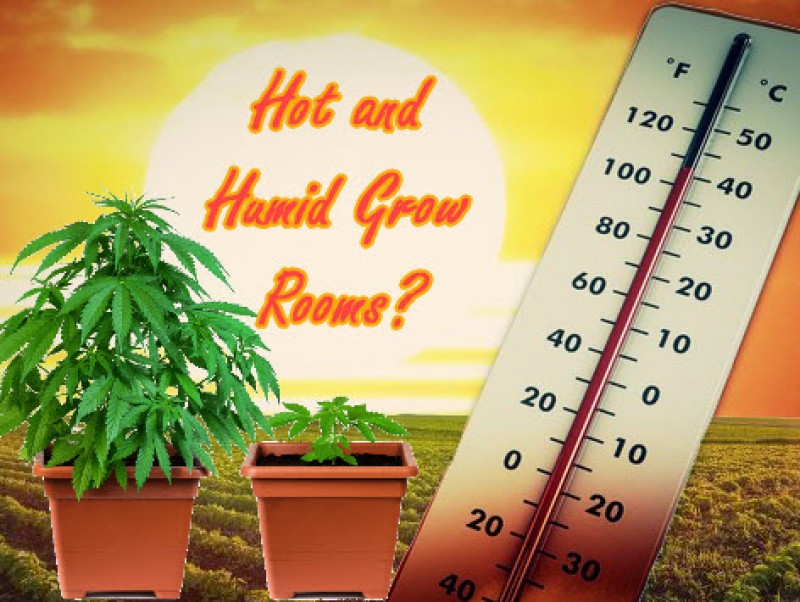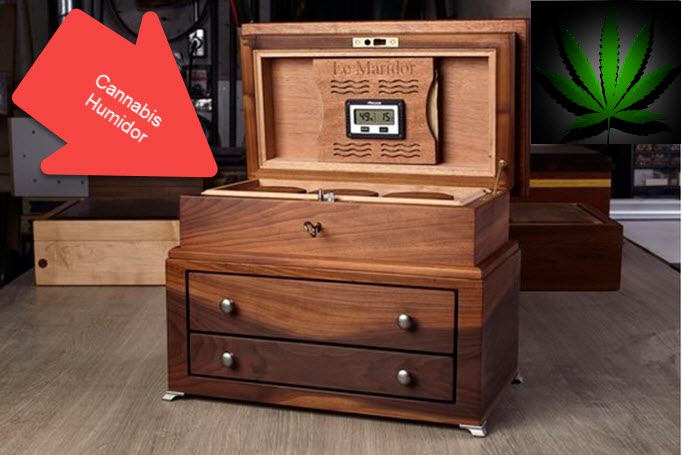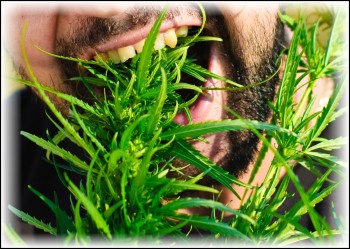What to do when your grow room gets too hot or humid?

Two very important factors when it comes to the growth of the cannabis plants are temperature and humidity and controlling these two will play a huge role in the success of the cultivation process. They are both of great importance irrespective of whether the cannabis plant is been grown indoors or outdoors.
In this article we will be paying attention to the benefits of these two important factors, how they can be maintained, the problems associated with their excesses and when inadequate. What can be done when they are in excess? What should a grower implement when they're inadequate? Read on to find out.
Temperature and Humidity
Along with other factors like the amount of light, availability of nutrients, grow medium, and watering cycles, temperature, and humidity play a huge role in the development of the cannabis plant. For a cannabis plant to grow desirable and strong buds to increase the yield of the cannabis grower, temperature and humidity need to be properly monitored and controlled. Therefore, it is paramount that every grower has a thermometer and hygrometer to monitor the temperature and humidity within the growing area regularly in order to ensure that they are not in excess.
When the temperature in the growing area is too high and the environment of the cannabis plant is continuously hot, this causes stress on the cannabis plant which affects the health of the plant. Heat stress which arises from the growing area being too hot can be detrimental to the yield of the cannabis plant as the plant is being strained and cannot grow optimally. Likewise, when a cannabis plant growing area is too humid, the plant is prone to insect attacks and invasion by mold and mildew. It is also important that the temperature and humidity in the growing area are not too low that it doesn’t support the growth of the cannabis plant.
Now we will be looking at the beneficial steps that can be taken by cannabis growers to remedy the different scenarios posed when the cannabis growing area is either too hot or too humid.
When the growing area is too humid
Use of Hygrometers: This might not be a step that one would expect to be taken when talking about dealing with a situation such as the growing area being too humid but the need for monitoring of humidity cannot be overemphasized. This is the first step to ensuring that the growing area is never too humid in the first place. Cheap hygrometers can be placed at different parts of the growing area to monitoring the humidity levels.
Ventilation: When it comes to humidity in the cannabis grow area, the role of the ventilation and airflow in the growing area should not be underplayed. The type of ventilation and its efficiency determines the flow of air into and out of the growing area. With adequate ventilation and airflow in and out of the growing area, the humidity levels of the growing area can be properly maintained.
Fans: One common feature of the indoor cannabis grow area is the fans that play a huge role in controlling the amount of humidity present in the growing area. Along with the ventilation systems, the fans are charged with airflow and they ensure that the hot and humid air around the growing area can be continuously replaced by cool and fresher air. They also help to ensure adequate circulation within the growing area to ensure that the plant does not have a buildup of moisture in some parts.
Dehumidifiers: For closed systems, dehumidifiers are a very good answer to the problem of excess humidity. They serve the purpose of condensing the air and removing the buildup of moisture that may exist in the growing area. It is worthy of mention though that dehumidifiers present a problem of overheating which can affect the plants. This problem can be countered adding the air vent tubing to exhaust to direct the heat outside.
When the growing area is too hot
Thermometers: Much like the hygrometers and humidity, the place of monitoring in terms of temperature should not be overlooked. Much electrical equipment adds to the buildup of heat in the growing area which is why it is important to monitor the temperature in the growing area before it becomes too hot.
Ventilation: When it comes to temperature and the growing area being too hot, the ventilation of the growing area too has to be considered. There is a need for proper and efficient ventilation systems to ensure that hot air in the growing area is properly expelled in order to be replaced by cooler and freshers air.
Use of air conditioners: The airflow within the growing area can be controlled and modulated with the use of air conditioners which will help to reduce the temperature of the air and promote the circulation of clean air. The use of air conditioners also helps to counter the effect of the buildup of heat from the bulbs, pumps, and other appliances.
Lighting schedules: Alternating the schedules of lights from day to night can also be beneficial in reducing the temperature available in the growing area. There are lesser temperature levels at night as opposed to the day so the usage of the lights at night instead of the day can be very beneficial in reducing the buildup of heat in the growing area.
Removal of heat-producing equipment: When you discover the growing area is too hot, it is best to ensure that all equipment that can generate heat are placed outside the growing area. Example light ballasts, pumps, and control boards.
Lights: Lights play a huge role in the buildup of heat in the growing area and so it is best to use the types of light that emit the least amount of heat which are LED grow lights. Air- and water-cooled lights are also a viable option to use as they also remove the problem of excess heat on account of lights.
The cultivation of top quality cannabis buds is an art. A grower has to pay close attention to the little details that affect the climate of the grow area because in the long run these things are the factors that make all the difference.
HEAT, MOISTURE, AND WEED, READ MORE...
STRAINS TO GROW IN HOT WEATHER CLIMATES, READ THIS!








